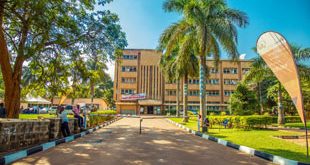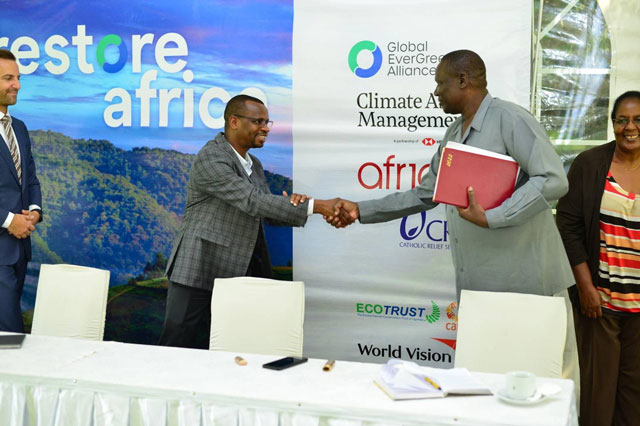
✳ Land restoration project set for 36 districts in Karamoja, Mount Elgon and SW Uganda
✳ 350,000 farming households to be more climate resilient
✳ Initiative is to see Uganda restore 560,000 hectares of land
✳ Target is to raise the forest cover in Uganda from 13% – 15% by the year 2026
Kampala, Uganda | LOUIS JADWONG & AGENCIES | The Restore Africa program has launched in Uganda today August 26, 2022 to enable a record 350,000 farming households to be more climate resilient. Restore Africa will work in 36 districts to improve degraded farms in Southwestern Uganda, Karamoja and Mount Elgon regions.
“I want to commit on behalf of the Ministry of Water and Environment, that we are in total support of this project and we’re going to do whatever it takes for it to be successful,” said Stephen Mugabi , Director Environment Affairs at the ministry at the launch in Kampala that attracted all the leading partners of the Restore Africa Programme.
Niek de Goeij, Chief of Party for the project in Uganda was understandably excited at the launch.
“We are thrilled that after years of effort, the Restore Africa program is finally starting. We are grateful to the Ministry of Water and the Environment, our consortium partners, Climate Asset Management, and the Global Evergreening Alliance for their support and leadership to get us here. In the years to come, we will collaborate to strengthen green and sustainable livelihoods to Ugandan smallholder farmers, while contributing to Uganda’s NDP3, Vision 2040, and the fight against climate change.”
“This new initiative is not business as usual,” remarked Niek de Goeij. He explained that it will be funded by a private sector company called Climate Asset Management through the Global EverGreening Alliance. Climate Asset Management will finance this land restoration work with a consortium of agencies led by Catholic Relief Services, with CARE International, Eco Trust, Uganda Landcare Network, World Agroforestry Centre (CIFOR-ICRAF) and World Vision, with overall management supported by the Global Evergreening Alliance.
“This project has been developed in collaboration with the Ministry of Water and we very much look forward to continuing effective collaboration to truly deliver to scale.”
The land restoration is an urgent task given the rapidly changing climate and the need to climate proof
Ugandan farmers and their farming systems. It will cement efforts to see Uganda overcome disasters like drought, floods, landslides and famine.
Uganda’s target is to raise the forest cover in Uganda from 13% – 15% by the year 2026
The land restoration strategy will plant trees and sequester sufficient carbon to generate some 20 million carbon credits, now called Internationally transferred mitigation outcomes (IMO’s). This will enable the private sector and industries working with Climate Asset Management, to offset their carbon emissions as they transition to a net zero model.
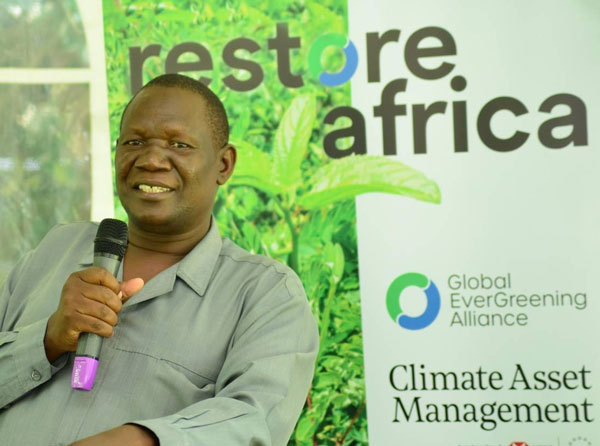
Climate Asset Management will use an innovative financing mechanism to provide funds to Restore Africa, that connects several international agencies with grassroots farmers to make restoration happen on a massive scale.
“Uganda has one of the most ambitious targets for this program and we think we are up to the challenge to lead efforts of land restoration in the country,” said Dr Jonathan Muriuki, Interim Restore Africa Programme Manager.
The Restore Africa project in Uganda, is part of a much larger program that will restore 1.9 million hectares of land, supporting 1.5 million smallholder farming families across six countries – Uganda, Kenya, Ethiopia, Malawi, Tanzania and Zambia. The commitment, first announced by the Global EverGreening Alliance with Climate Asset Management at COP26 in Glasgow is one of the largest land restoration programs in the world and will significantly contribute to the African Forest Landscape Restoration Initiative (AFR100), which aims to restore 100 million hectares of degraded land by 2030.
The program has already had successful degradable land restorations in Tanzania and Ethiopia in partnership with AFR100.
Restore Africa technical support teams will work with farming communities to upgrade and improve existing agroforestry practices and integrate trees into various farming systems to improve soil and water management and contribute to improved livelihoods.
Not just trees!
The restoration process, however, is not about just planting trees. Across the 36 districts, the restore Africa technical support teams will work with farming communities to upgrade and improve existing agroforestry practices and integrate trees into various farming systems to improve soil and water management and contribute to improved livelihoods.
“We have challenged ourselves in Uganda to restore 560,000 hectares of land. This calls for working with partners to ensure harmonization of efforts,” said Dr Joy Tukahirwa National Coordinator Uganda Land Care.
She explained that poor land management practices, extreme weather events and population pressure has escalated degradation. Climate change leads to infertile land and reduced productive capacity of the land bringing about famine, environmental hazards, high food prices, increased droughts, rising oceans and lakes, healthy risks, species, loss of bio diversity.
“Our target is to raise the forest cover in Uganda from 13% – 15% by the year 2026 and by 2030 we can assume a growth of up to 18% – 24 by the year 2040,” Dr Joy Tukahirwa confrimed.
In the high production areas of southwest Uganda, farmers will integrate trees that support and enhance their production systems and value chains. Examples include improved shade management in coffee and banana farming system. Farmers will also explore options to plan fruit trees, and flowering trees to provide shade and build secure boundary fences in vanilla farms.
In the savannah areas of Karamoja, restore Africa, will work to use trees in reducing soil water loss and improve pasture management. All this work will contribute to reducing erosion, improving crop yields, promoting crop diversification and creating new employment opportunities particularly for women and youth.
But, at the same time, growing millions of trees to improve farming systems across Uganda, will also be using trees to capture carbon from the atmosphere and mitigate the effects of climate change.
Farmers will also explore options to plan fruit trees, and flowering trees to provide shade and build secure boundary fences in vanilla farms.
LAUNCH PICTORIAL
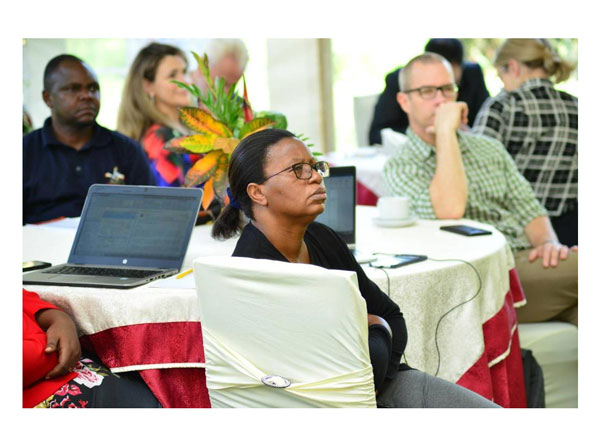
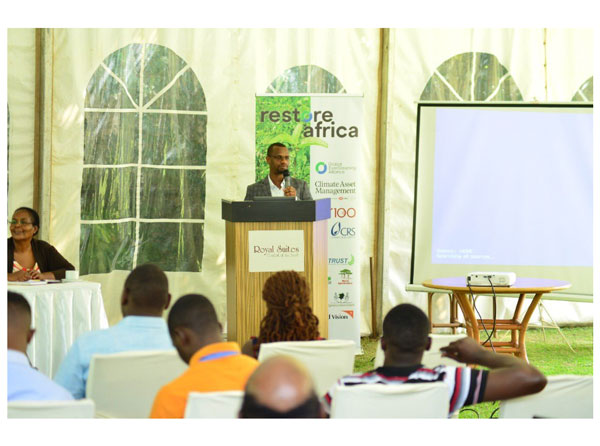
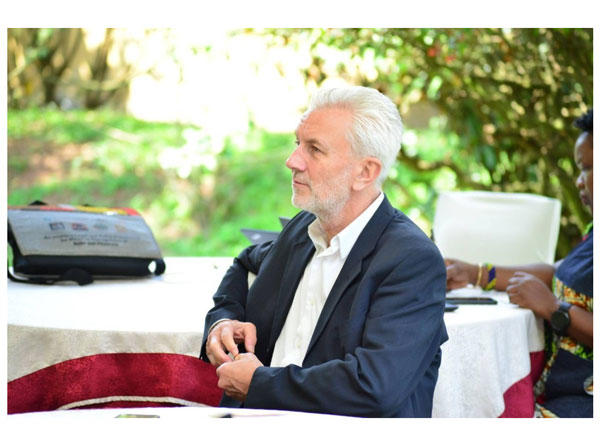
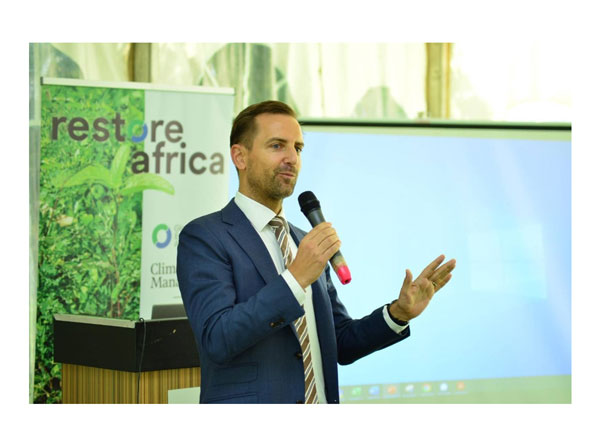
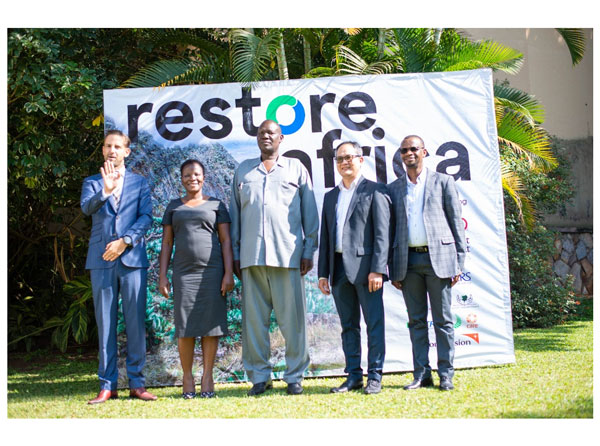
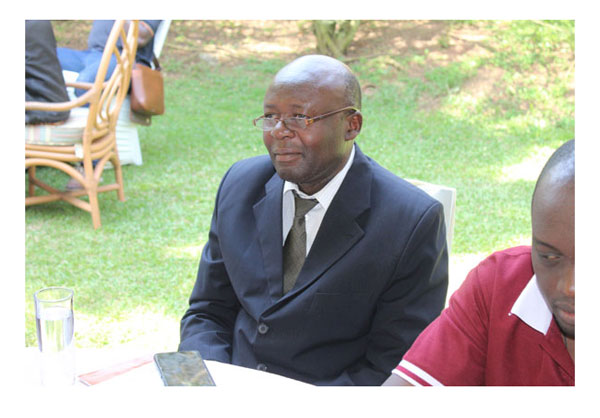
 The Independent Uganda: You get the Truth we Pay the Price
The Independent Uganda: You get the Truth we Pay the Price

